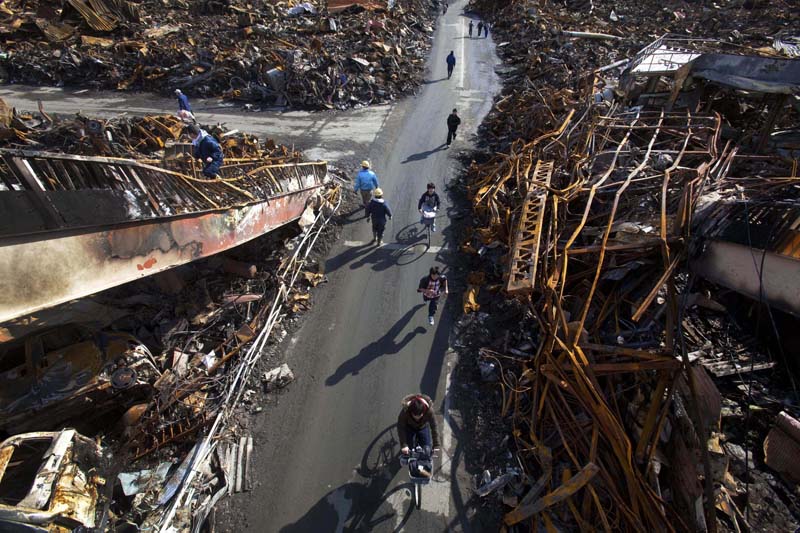

The images still hold the power to shock.
Dazed survivors walk beneath huge sea tankers deposited amid an expanse of rubble and twisted iron that was once a busy downtown, the ships toppled onto their sides like children’s toys. Grieving survivors pick through the flattened debris where their homes used to be. Deserted farms stand in the shadow of the Fukushima nuclear plant, where a catastrophic meltdown still reverberates.
These arresting images were captured by the Associated Press in 2011 after a massive wall of water leveled part of Japan’s northeastern coast, washing away cars, homes, office buildings and thousands of people.
Ten years later, AP journalists have returned to document the communities that were ripped apart by what’s simply referred to here as the Great East Japan Earthquake. The urge to rebuild in a land that has been wracked by millennia of disaster — volcanic eruptions, tsunamis, earthquakes, war and famine — is powerful, and there are areas where there’s little or no trace of the devastation of 2011.
But this triple disaster in the Tohoku region of Japan — earthquake, tsunami and nuclear meltdown — has been unlike any Japan has faced before, and the challenges of returning to what was normal a decade ago have been immense. Half a million were forced from their homes; tens of thousands have not returned, emptying towns that were already struggling to keep their young people from leaving for Tokyo and the other megacities. Radiation fears linger. Government incompetence, petty squabbling and bureaucratic wrangling have delayed building efforts.
Despite the setbacks and uneven progress, the Tohoku of 2021 is a testament to a collective force of will — national, local and personal. Look closely, though, and you’ll see that even the most breathtaking transformations carry the residue of what happened in 2011, the scars of that deep wound to the region’s psyche.
These AP images, then and now, raise a fundamental question: How do you mark change after great trauma?
In one way, it’s the simplest thing in the world to describe. The removal of tonnes of rubble here, the absence of toppled tankers there. The repaved roads where there had been cracked and buckled piles of asphalt before. The gleaming new buildings that now rise above what had been cleared dirt patches.
But the starkness of this physical change also carries the idea of something that’s much less clear cut, something about the people who live in these places. Their resilience, their stoicism, their grief and anger and stubborn refusal to bow to forces outside their control, whether natural or bureaucratic.
All of that, and more, is present in these powerful scenes of before and after, then and now.
The pictures tell the story — of great change and the people who made it happen.